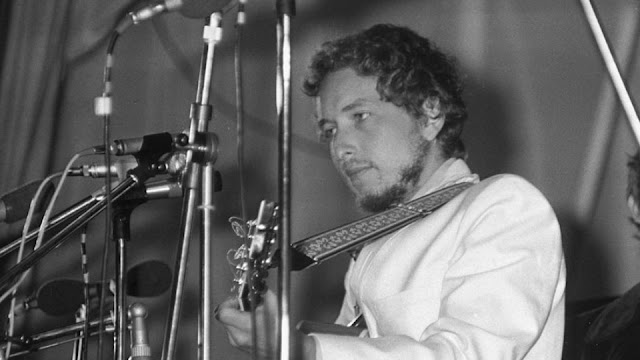Whether you hate-watched, love-watched, or ignored last night's Academy Awards, you may be tired today of Oscar talk. Take a break, unplug yourself from Facebook and Twitter, and travel with me back in TV time. It’s June 7th, 1969, and The Johnny Cash Show makes its debut on ABC, recorded—where else?—at the Grand Ole Opry (“I wouldn’t do it anywhere but here”). Featuring Cash ensemble regulars June Carter, the Carter family, Carl Perkins, the Statler Brothers, and the Tennessee Three, the musical variety show has a definite showbiz feel. Even the opening credits give this impression, with a decidedly kitschy big band rendition of “Folsom Prison Blues.” This seems a far cry from the defiant Johnny Cash who gave the world the finger in a photo taken that same year during his San Quentin gig (where inmate Merle Haggard sat in attendance).
But showbiz Johnny Cash is still every inch the man in black, with his rough edges and refined musical tastes (in fact, Cash debuted the song “Man in Black” on a later episode). As daughter Rosanne showed us, Cash was a musicologist of essential Americana. His choice of musical guests for his debut program—Bob Dylan, Joni Mitchell, and Cajun fiddler Doug Kershaw—makes plain Cash’s love for folk songcraft. The appearance on the Cash show was Kershaw’s big break (two months later his “Louisiana Man” became the first song broadcast from the moon by the Apollo 12 astronauts). Mitchell, who plays “Both Sides Now” from her celebrated second album Clouds, was already a rising star. And Dylan was, well, Dylan. Even if all you know of Johnny Cash comes from the 2005 film Walk the Line, you’ll know he was a huge Dylan admirer. In the year The Johnny Cash Show debuted, the pair recorded over a dozen songs together, one of which, “Girl from the North Country,” appeared on Dylan’s country album Nashville Skyline. They play the song together, and Dylan plays that album’s “I Threw it All Away,” one of my all-time favorites.
Initially billed as “a lively new way to enjoy the summer!” The Johnny Cash Show had a somewhat rocky two-year run, occasionally running afoul of nervous network executives when, for example, Cash refused to censor the word “stoned” from Kris Kristofferson’s “Sunday Morning Coming Down” and brought on Pete Seeger, despite the furor his anti-war views caused elsewhere. Ever the iconoclast, Cash was also ever the consummate entertainer. After watching the first episode of his show, you might agree that Cash and friends could have carried the hour even without his famous guests. Cash opens with a spirited “Ring of Fire” and also plays “Folsom Prison Blues,” “The Wall,” and “Greystone Chapel.” And above, watch Johnny and June sing a sweet duet of Dylan’s “It Ain’t Me Babe.”
